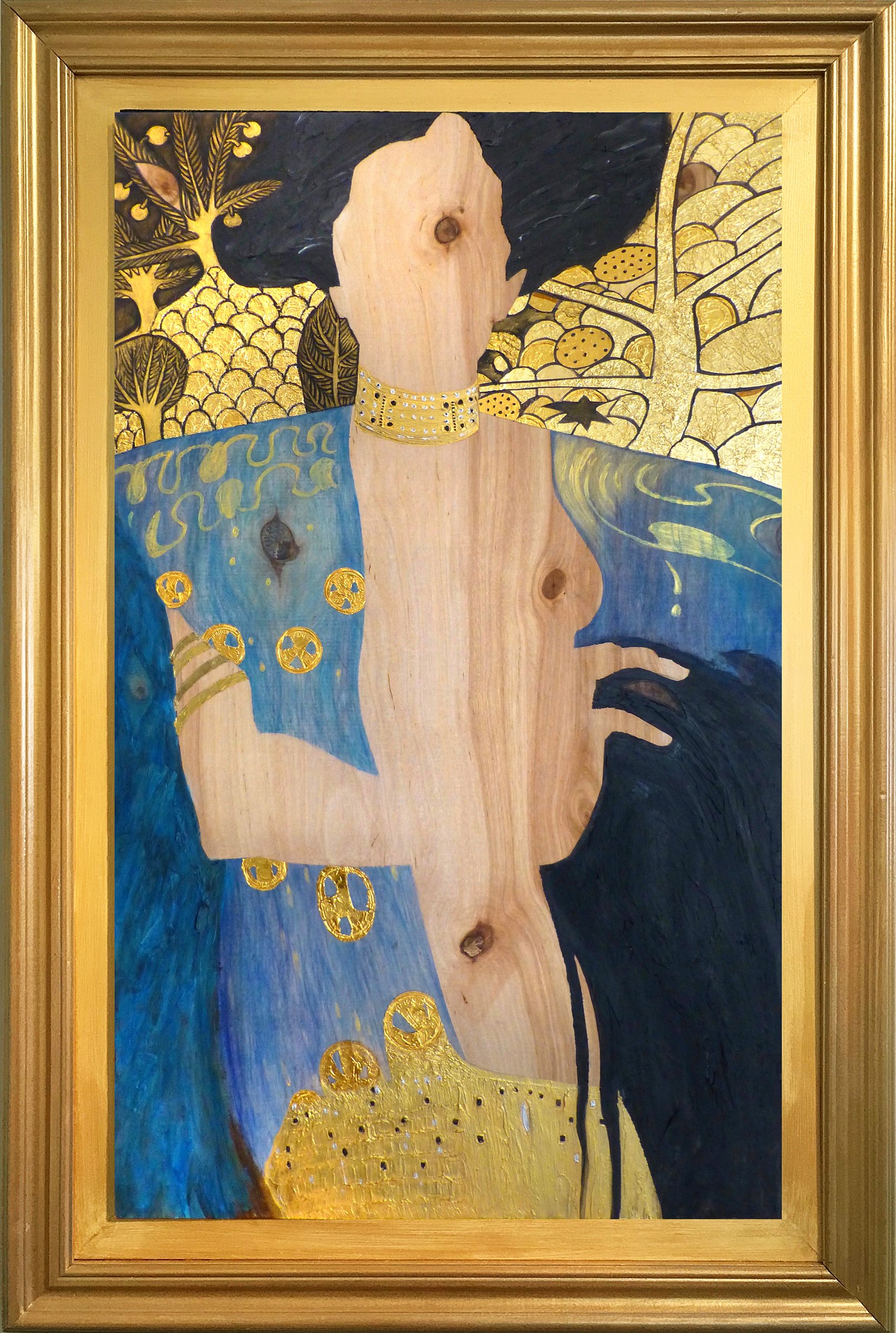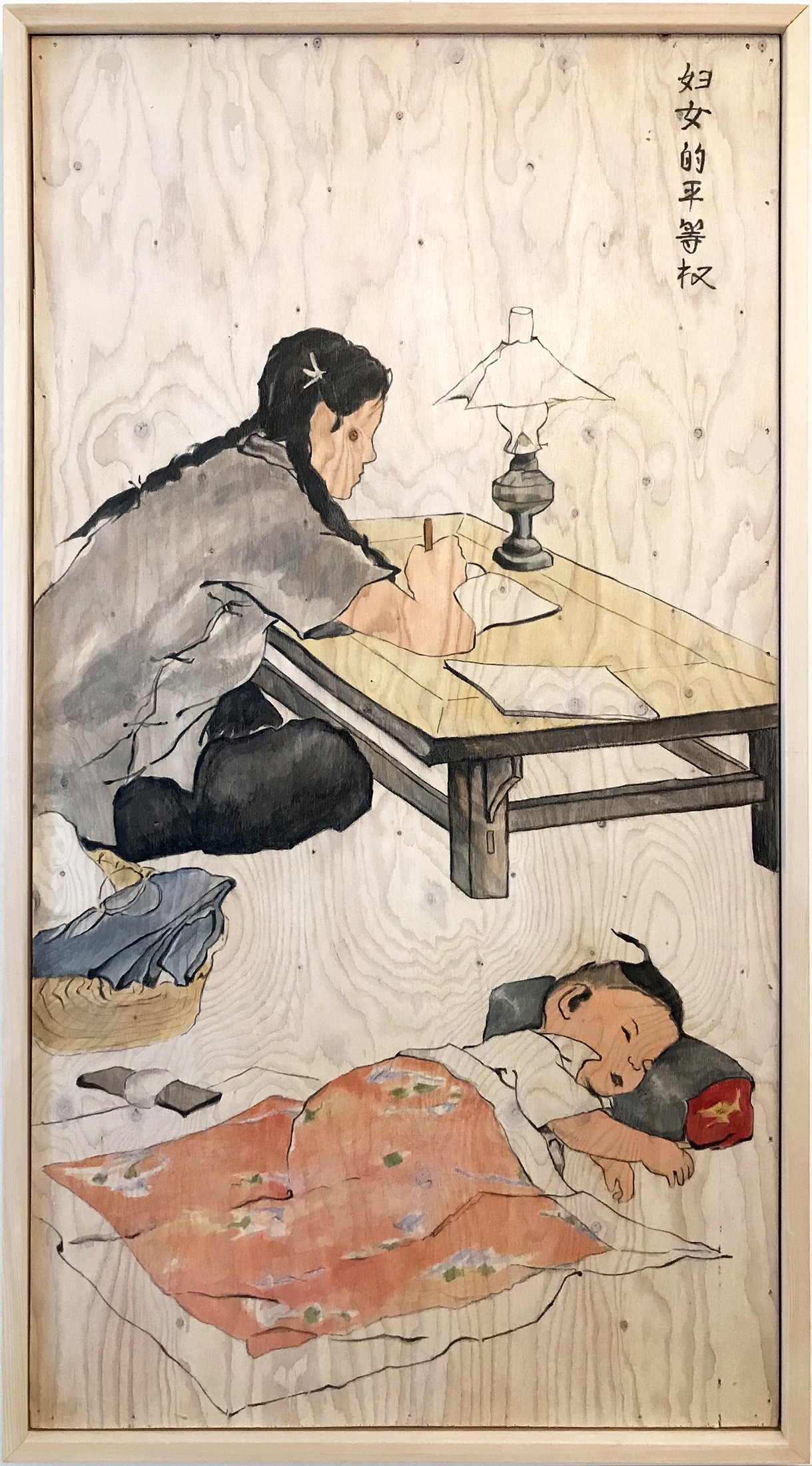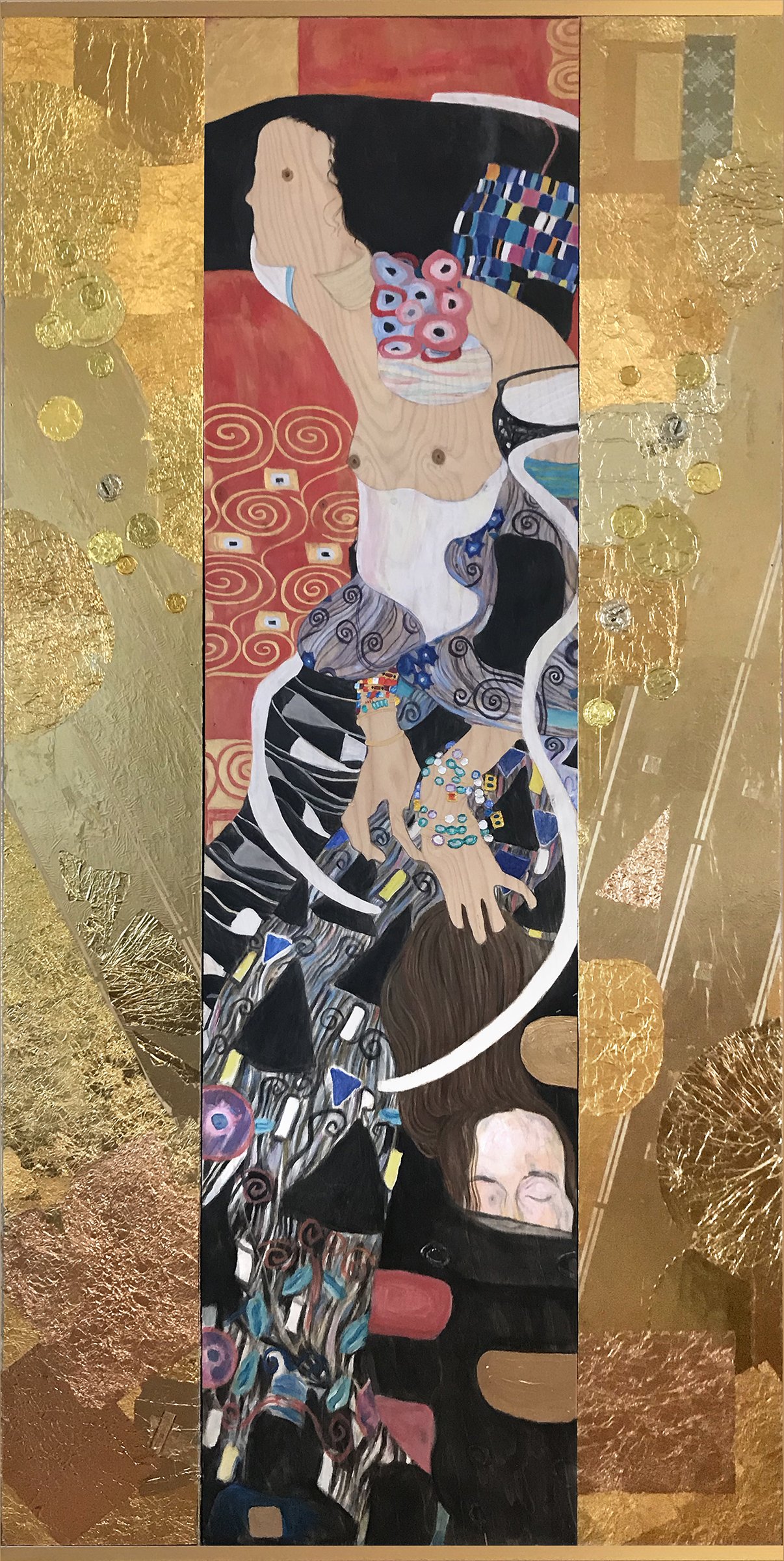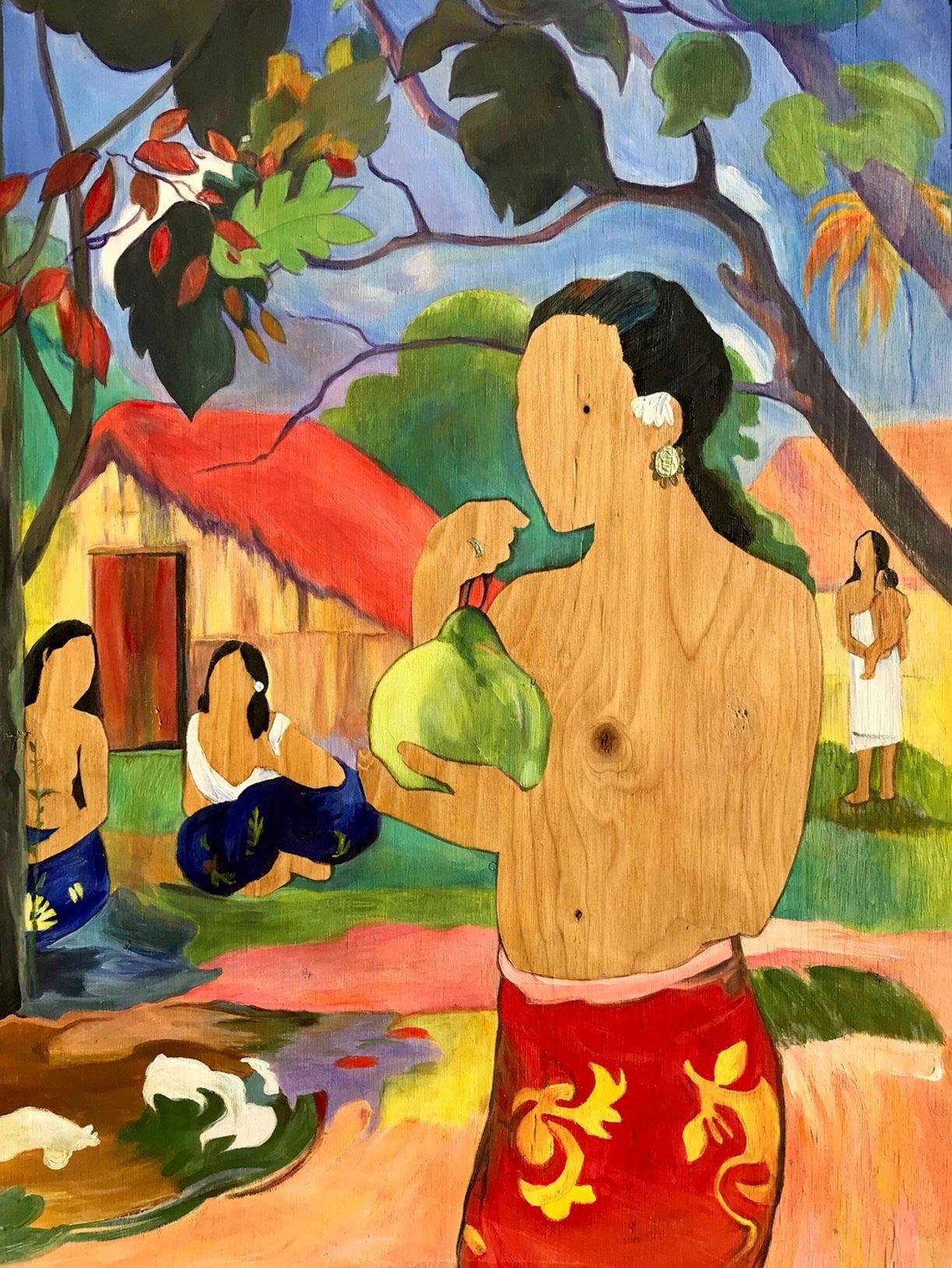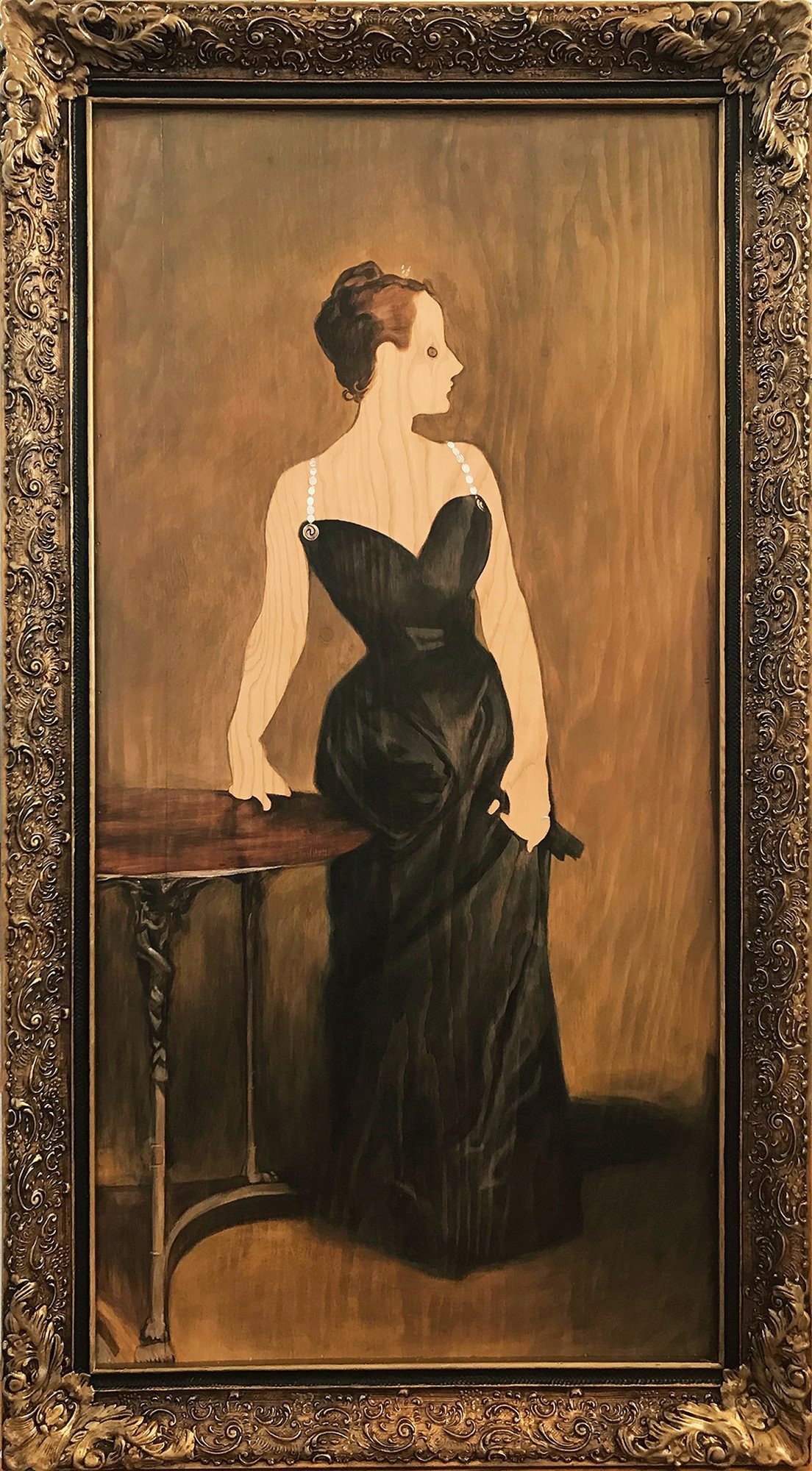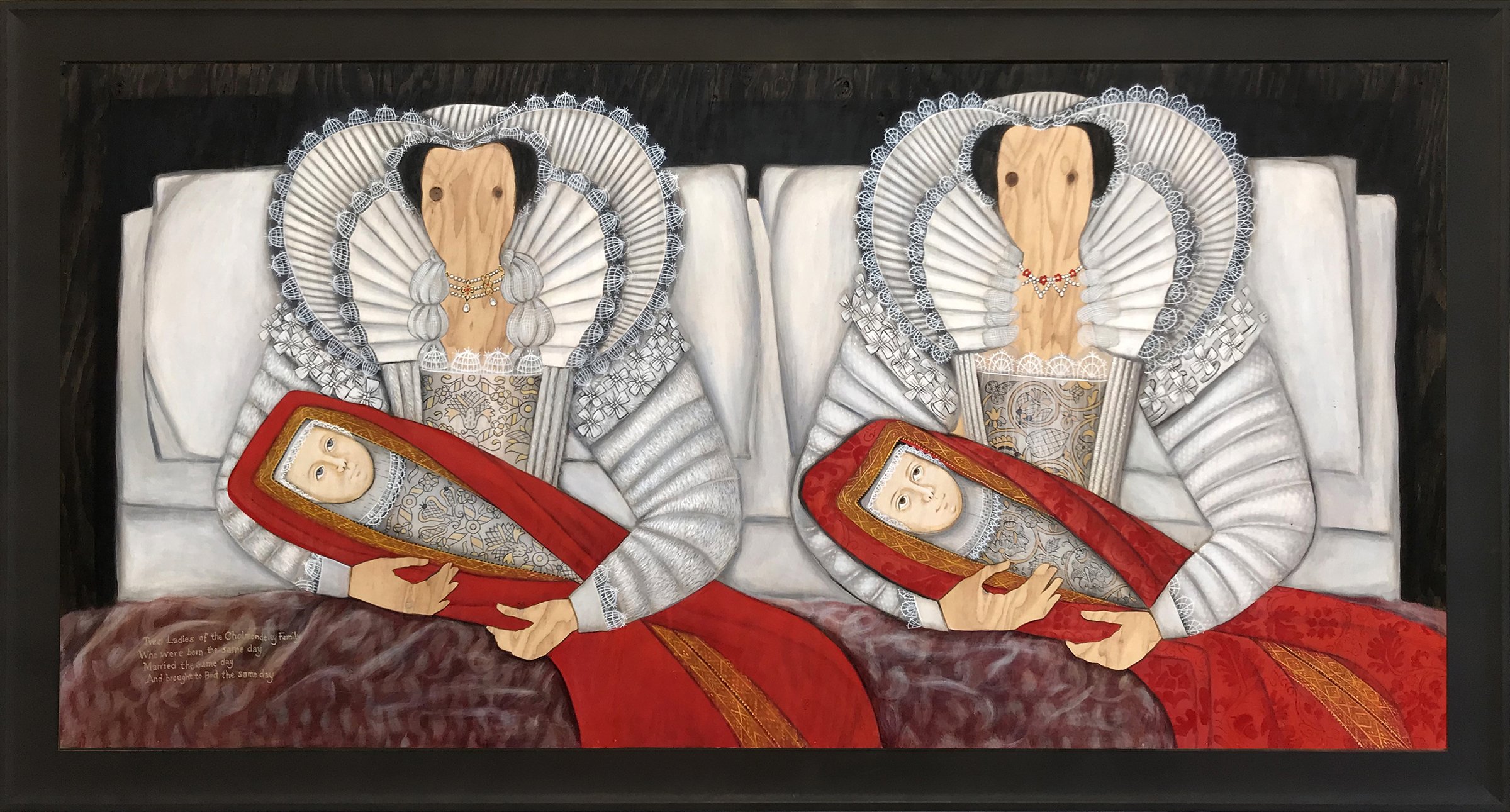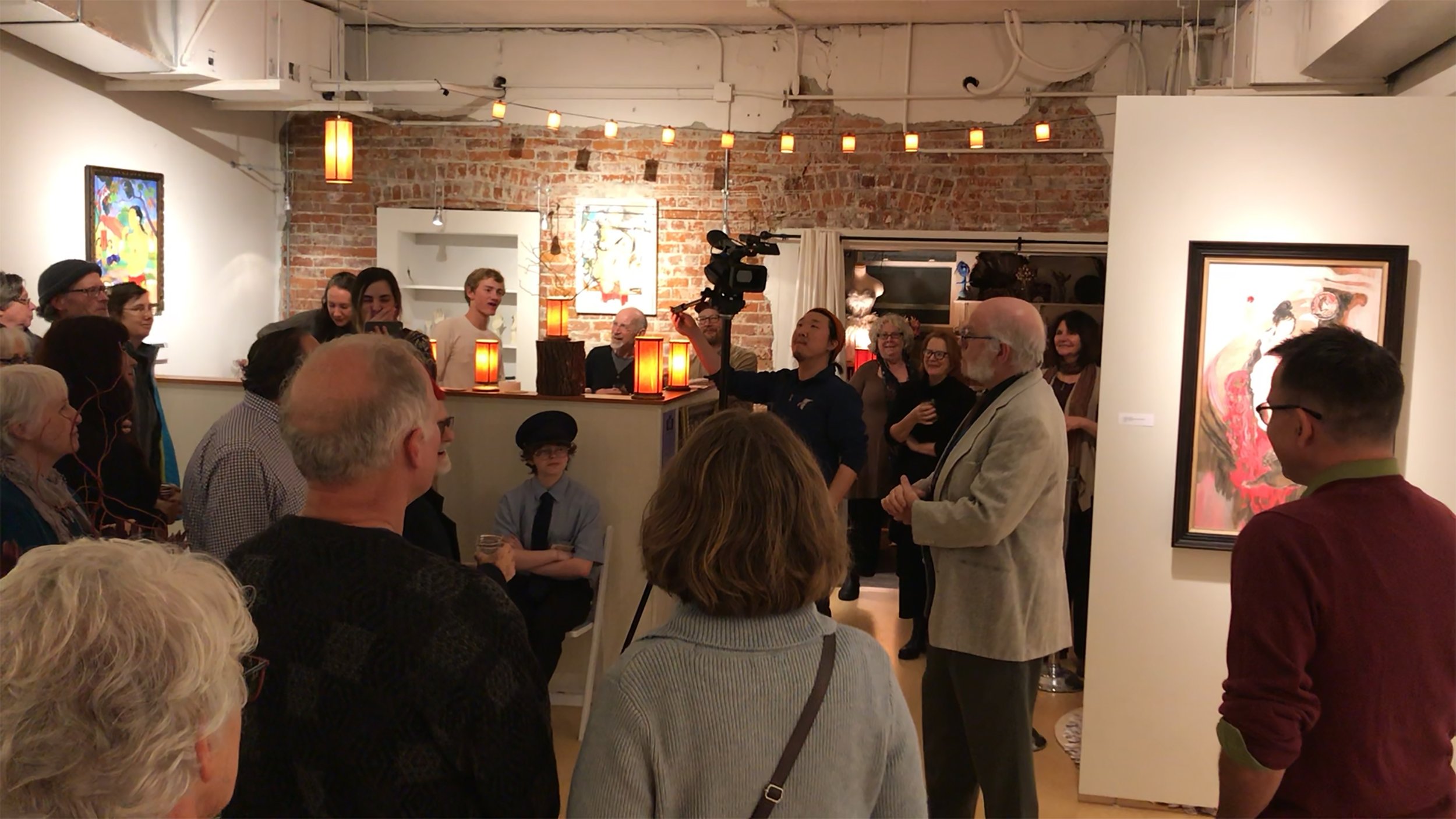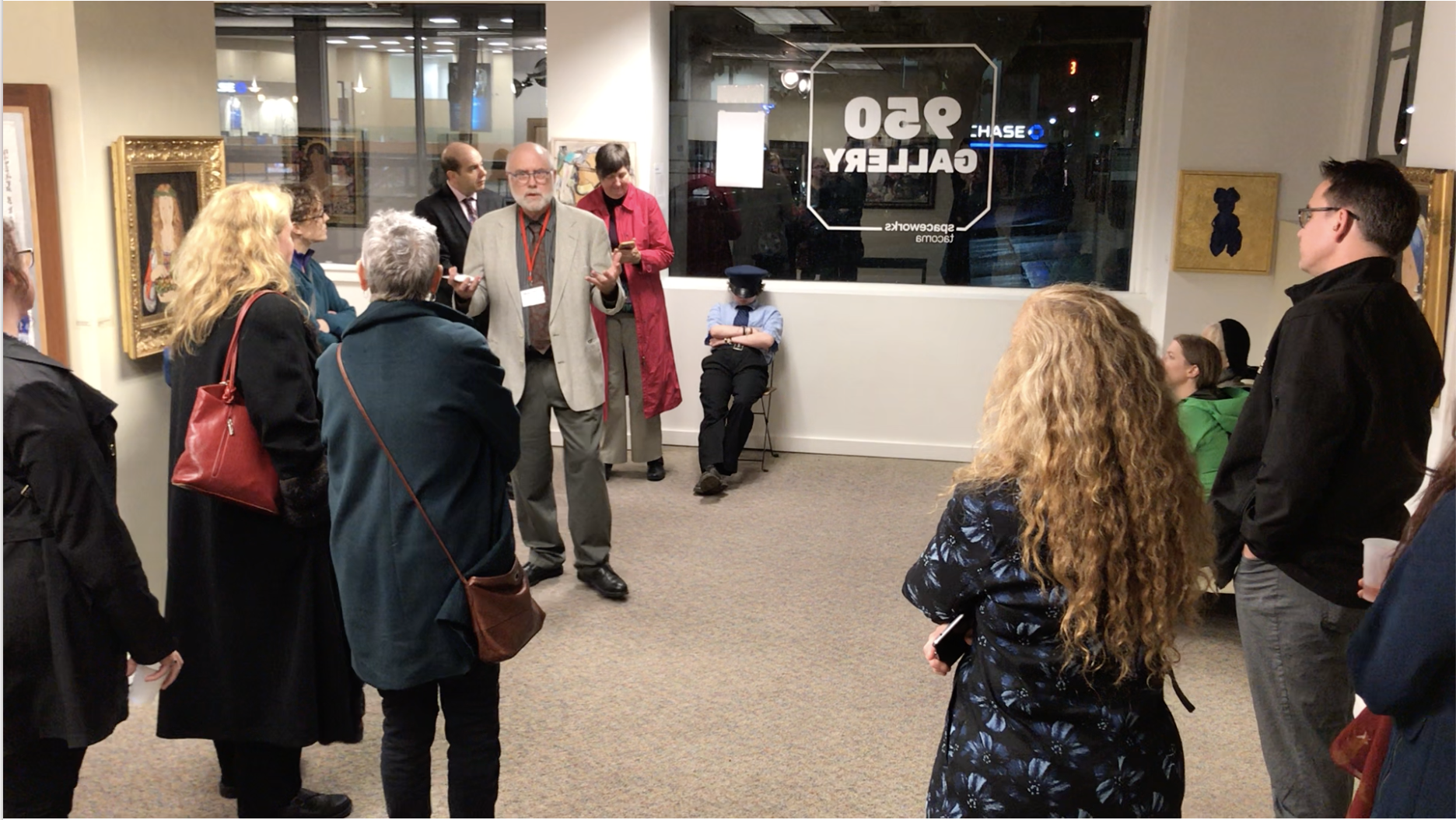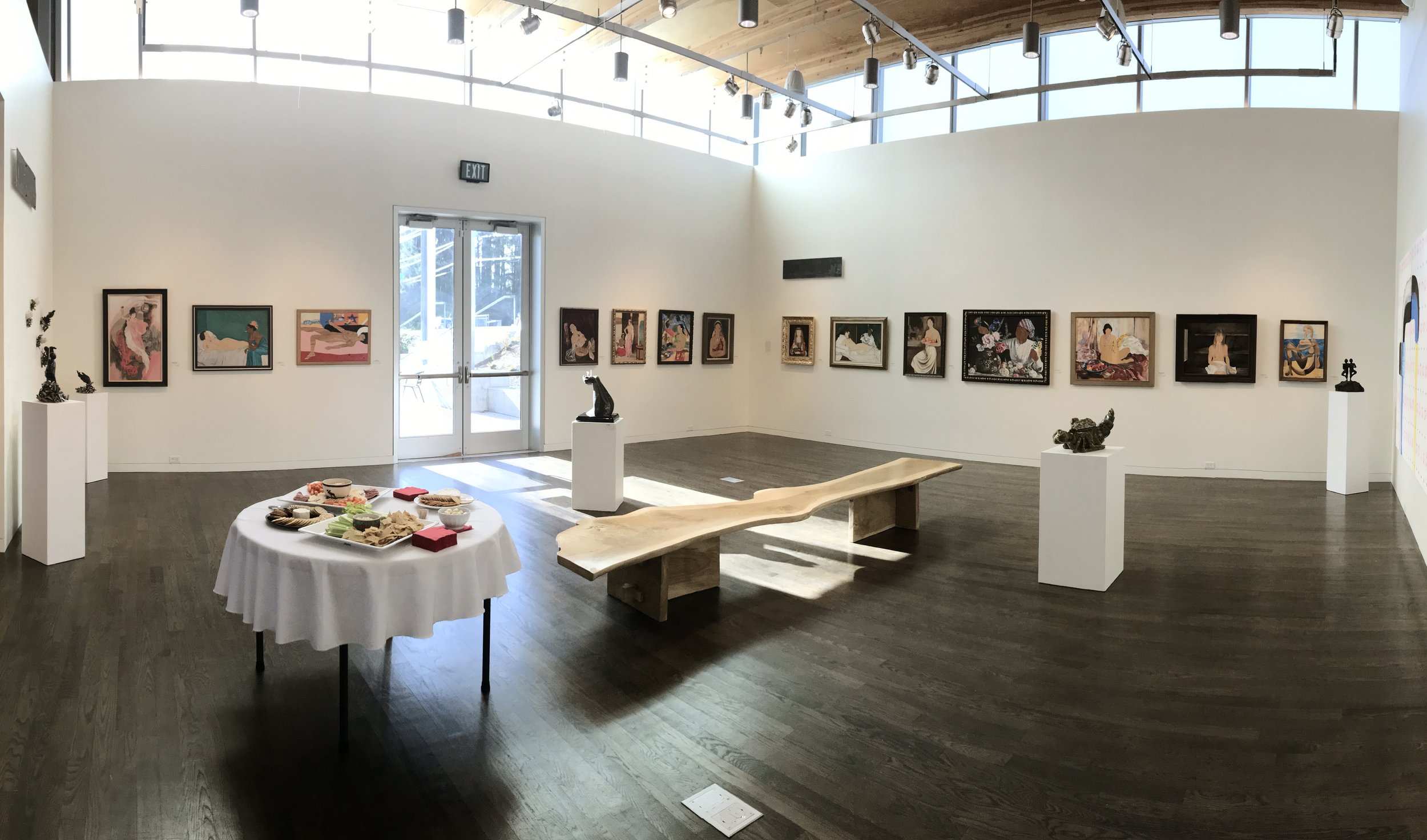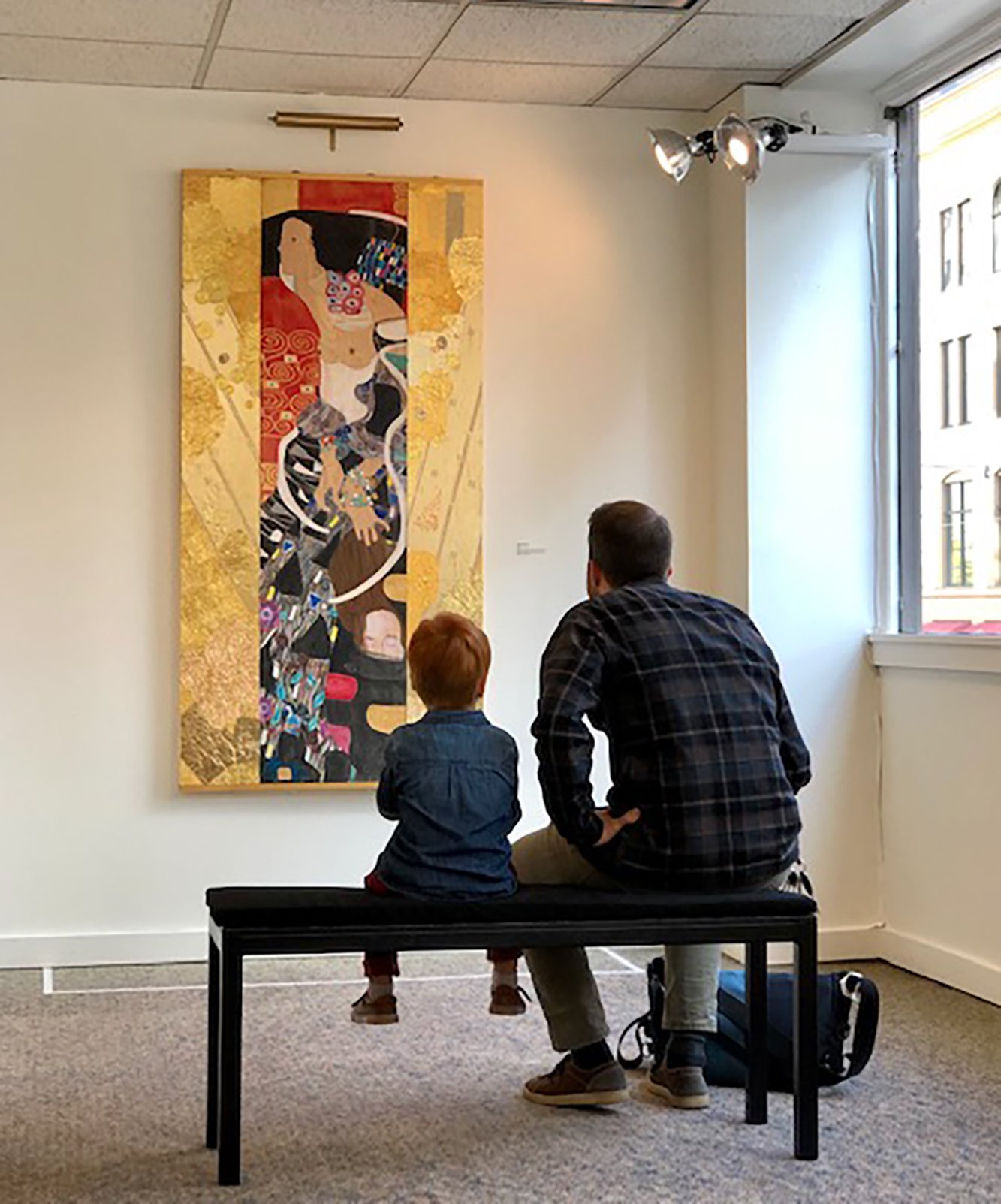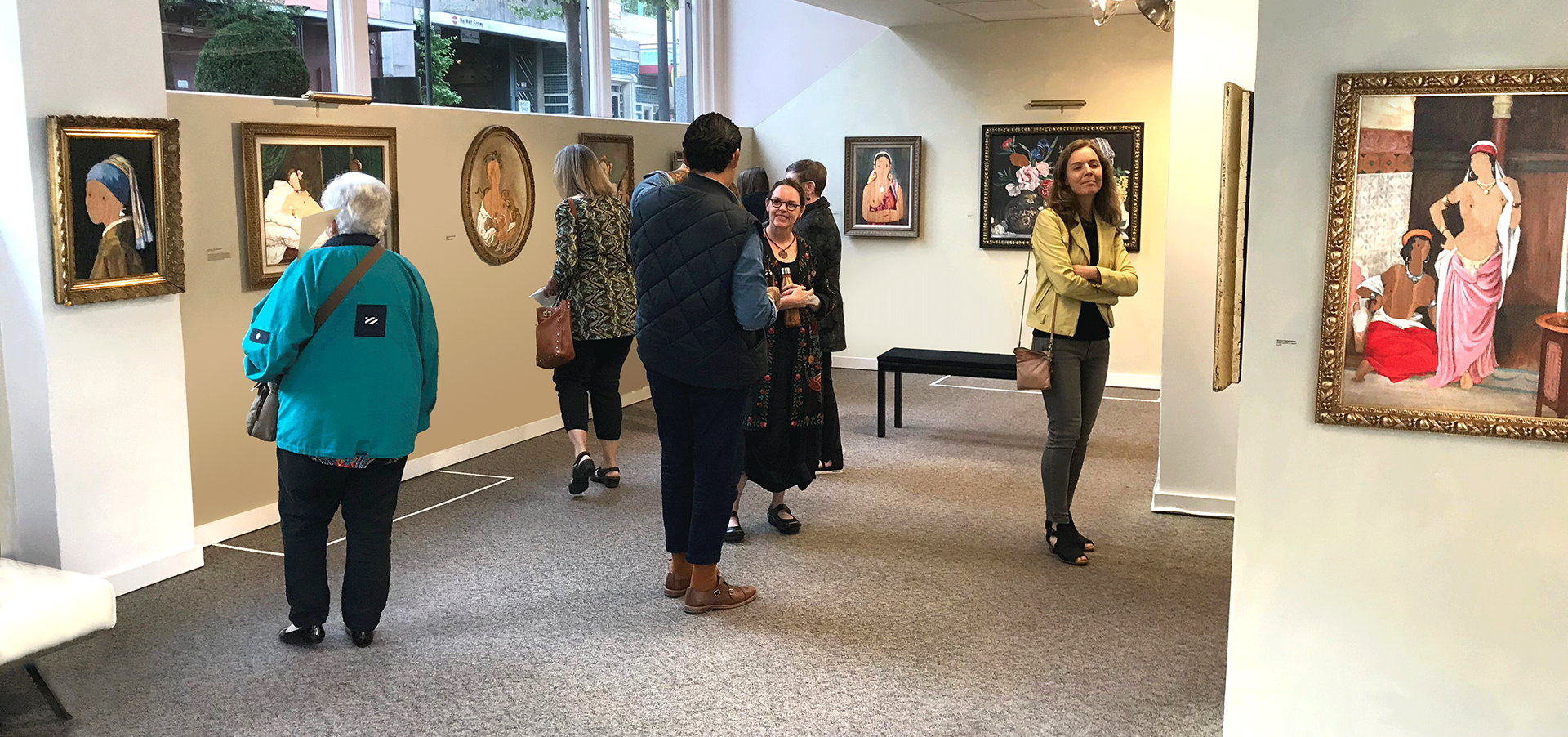Interview
Lynette Charters
Charters was born and raised in the UK. She is a conceptual artist offering a perspective of society and history from the female identifying point of view. She holds a BA (hons) from Cardiff, Wales, and an MFA from Chelsea, London. Charters studied under the UK painter Graham Crowley, sculptor Ian Taylor, print-maker Amanda Faulkner, and has been an assistant to the sculptor Andy Goldsworthy, while also having traveled internationally, working in animation.
Charters has exhibited in many locations in America, most recently at the Old Courthouse Arts Center (Chicago), Marin County Society of Artists (Bay Area), and in exhibitions in the UK.
She has won awards at Ryan James Fine Arts, Tacoma Community College and South Puget Sound Community College.
She has featured in articles in Kirkland Lifestyle Magazine, Shoutout LA, The Olympian, and Oly Arts magazines. Charters currently works from her studio in Olympia, Washington.
What is your background and how did you start your journey in the art world?
“I always liked making art, and couldn’t envisage myself doing anything else. I found it difficult to focus in class and was always getting into trouble for doodling on textbooks, walls, my arms/hands, my jeans—everywhere. I just liked to draw on stuff. I began further education with an art foundation course at Bradford College of Art in Yorkshire in the north of England. This is the same college that David Hockney and Andy Goldsworthy went to. I wanted to stretch my wings and broaden my skills, so I switched to the sculpture department and learned how to weld. I also tried my hand at wood and stone carving and really enjoyed the process.
One day, Andy Goldsworthy visited the college to give a lecture on his work. He asked for volunteers to work on one of the large outdoor sculptures at Grizedale Sculpture Park in the Lake District. I volunteered with 3 other students. It was hard work but so rewarding, being out there in the wilderness, far from civilization and a telly. It was grand and I enjoyed every second. I worked on one more large outdoor sculpture with him in Dorset, but after that we lost touch.
After Bradford College, I attended a Bachelor of Arts course in fine art at Cardiff College in South Wales. Having a curious mind, I moved from the sculpture department to printmaking. I was attracted by the process and working with it kept me grounded. At the college, I met the painter Graham Crowley, who taught me to see that everything I did held some kind of message. It was a very exciting concept for me that I could communicate just by the materials or the format I chose to use. I graduated with a 1st class degree, and won a grant to go to Chelsea College in London to do my MFA.
Living in London is expensive, so after I graduated, an offer to work in an animation studio seemed very attractive. The animation business has few women holding top creative jobs in spite of the pool of female talent in the industry. After having my baby, it became difficult to find work. There was still traditional work available, but being seen as a mother means your perceived availability takes a hit. I missed being able to create fine art again, as I never intended to desert it, so I decided to launch myself back into my original career path.”
What inspires you?
“I am inspired by any art which pushes the boundaries in some way, either in discipline or in concept.
Traditions are very interesting to explore and question. It’s important to have a broad knowledge of what happened in the past, and how it brought society to its current collective identity and formed our collective cultures. It’s super important to push back against the age-old preconceptions which may have worked for some people in the past, but need to be readjusted to make society more equitable and work for everyone in the present, and hopefully in the future.”
“I paint on wood and find it very meaningful to use the absence of paint to represent the absence of the woman’s autonomy and identity. The wood knots become well-placed nipples. I’m entertained by the idea that people will have to come to terms with their own projections of sexuality on the wood grain and knots.”
What themes do you pursue? Is there an underlying message in your work?
“I explore themes of representation of the female experience, referencing history to comment on how women are presented but not represented in art and society, past and present. Women are taught that it’s not feminine to speak up or push against our perceived place in society. Indeed, in the not-too-distant past, women were locked up and deemed insane if they made people uncomfortable in any way, spoke out of turn, or made anyone feel uncomfortable about their projected presumptions of women. It was a convenient way to keep women quiet and controlled. There are still ways society finds to control how much we women speak up about what matters to us.
There are so many women’s rights being attacked right now. We never achieved equality; not even close. Take the ERA, for example. There is no reason why women should not earn the same as men for the same work. According the the Pew Research Center, in 2020, women earned 84% of what men earn, and this has remained mostly unchanged for the last 15 years. That means women work 42 days in the year for free, and that’s not taking into account all the unpaid work women do volunteering at schools or working in the home. The figures are worse for BIPOC women, who only earn one-third of the wages of white men on average.
In spite of the myth, women never have been able to fully rely on a partner to keep the bills paid and food on the table. When they try, they often sacrifice their autonomy and often their physical safety. The current pandemic has made it doubly hard on women as they have disproportionately left the workforce en-masse to care for family members of all ages. It’s extremely important to keep the dialogue open and not pretend this injustice doesn’t exist.”
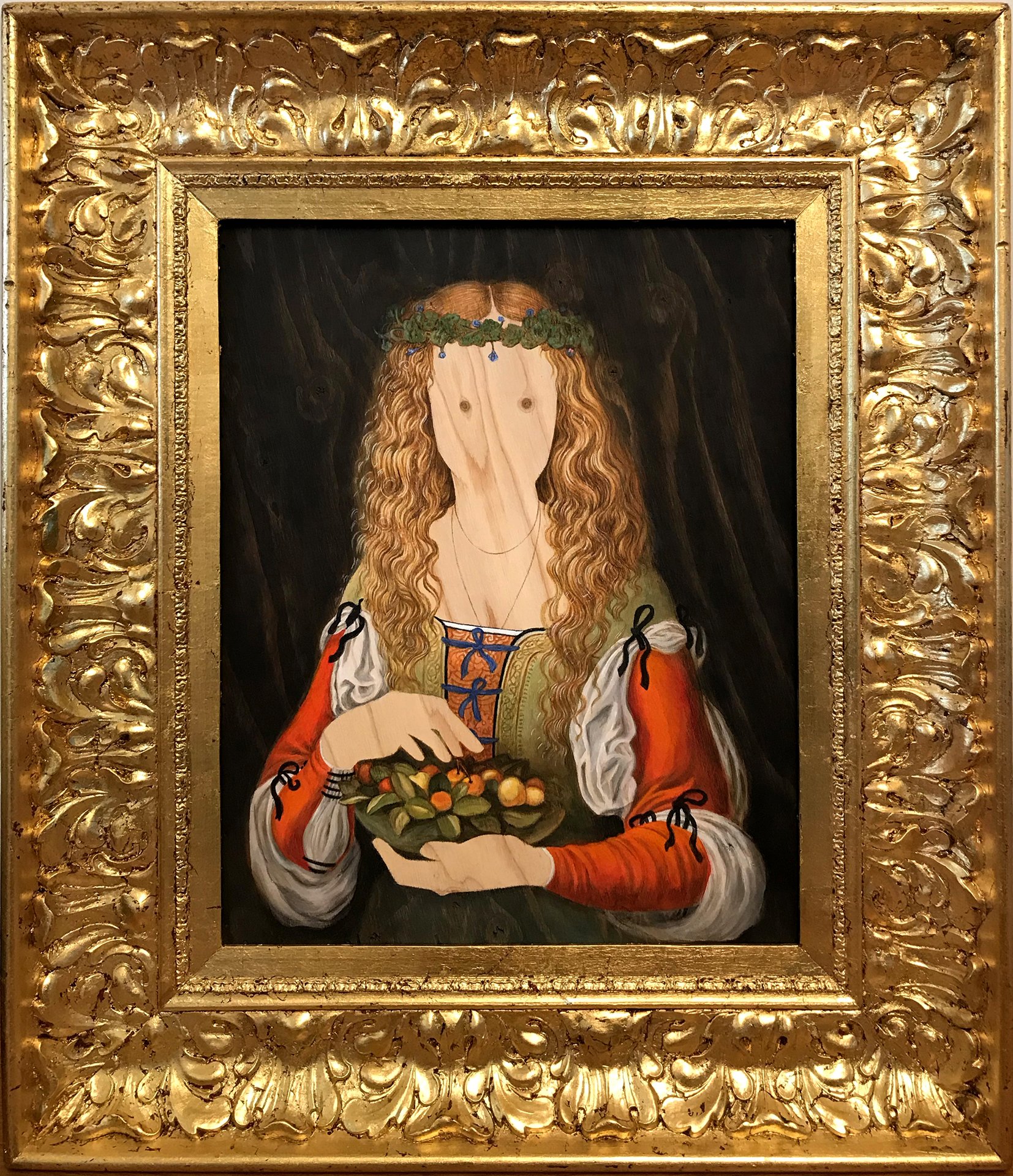
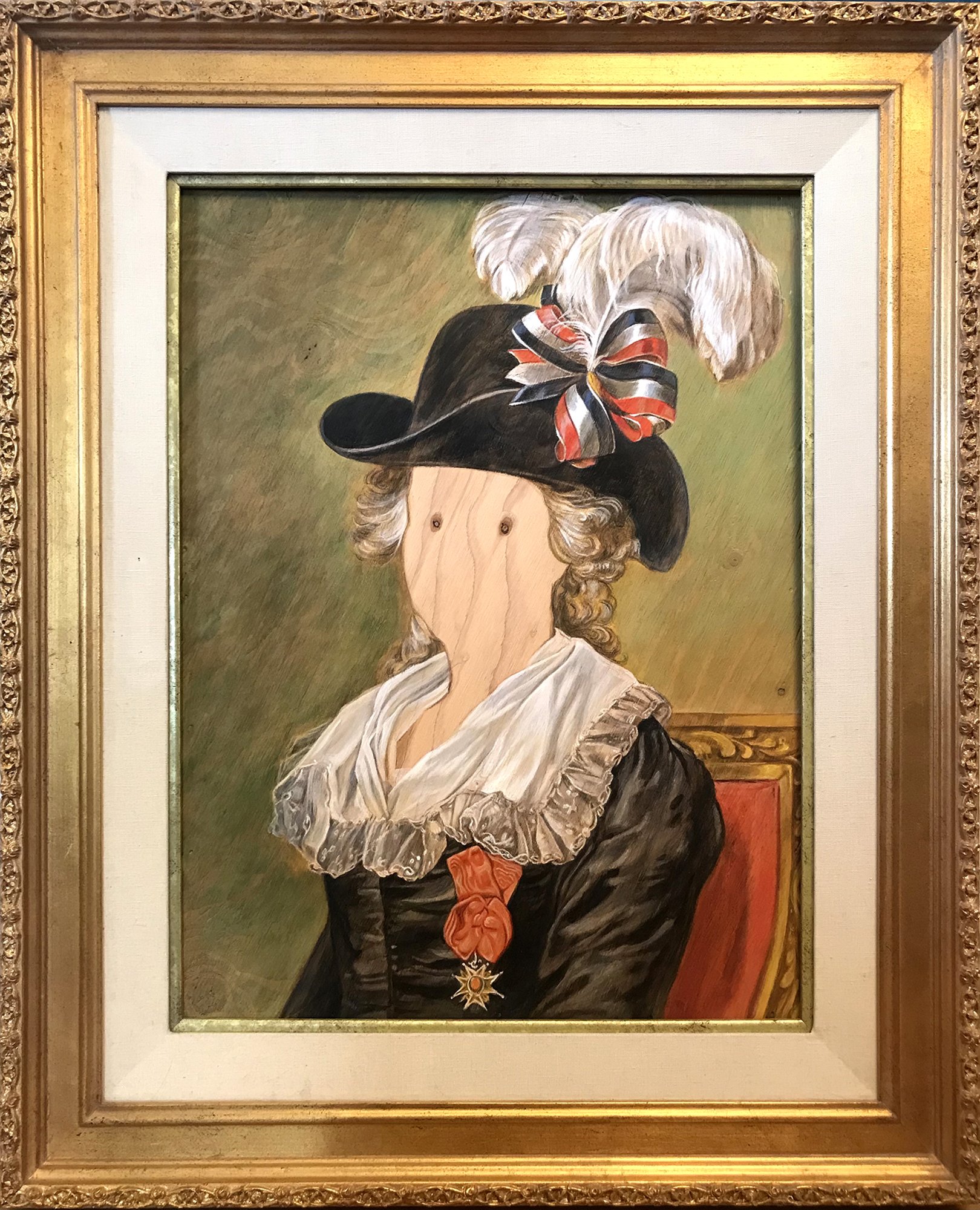
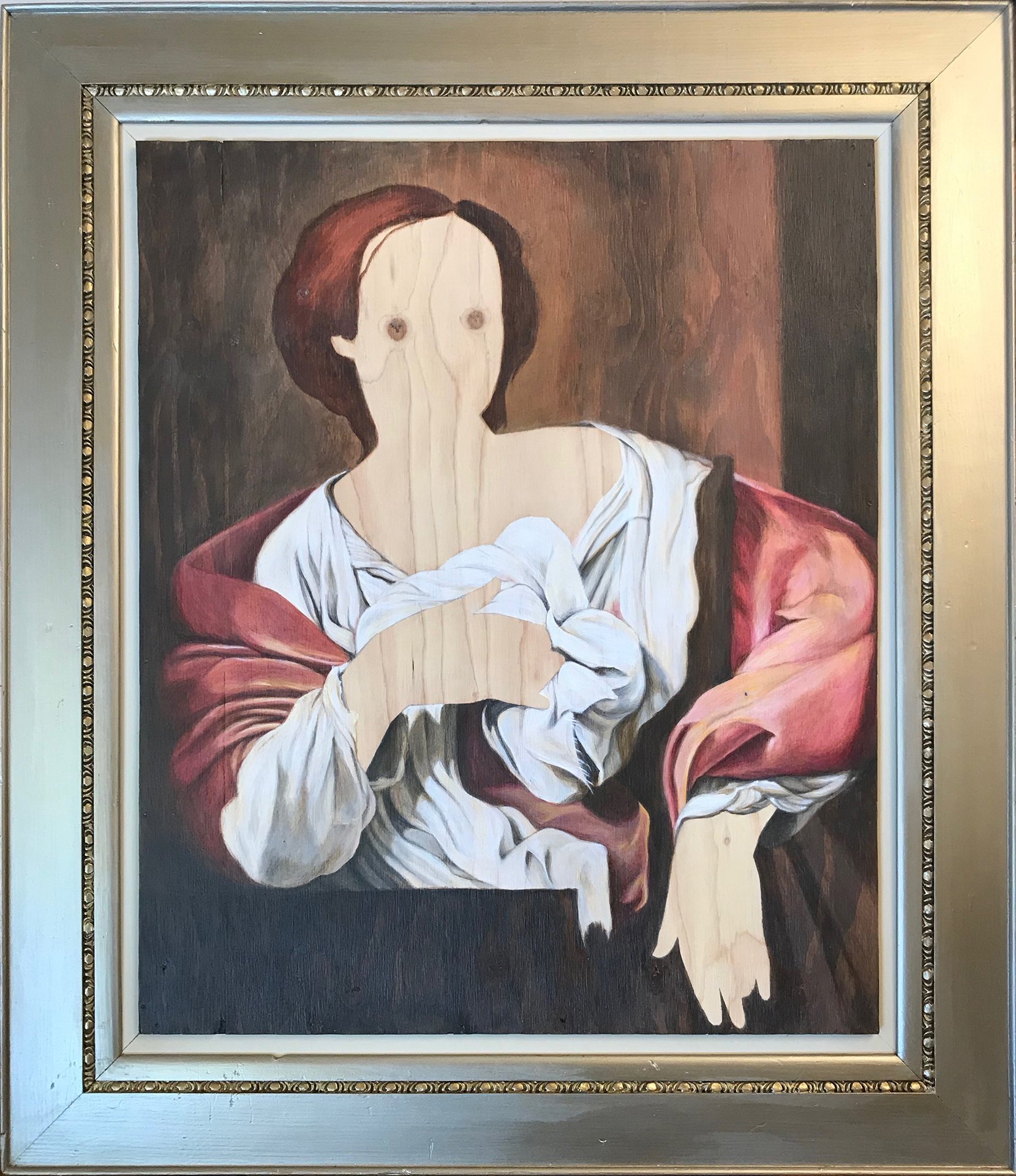
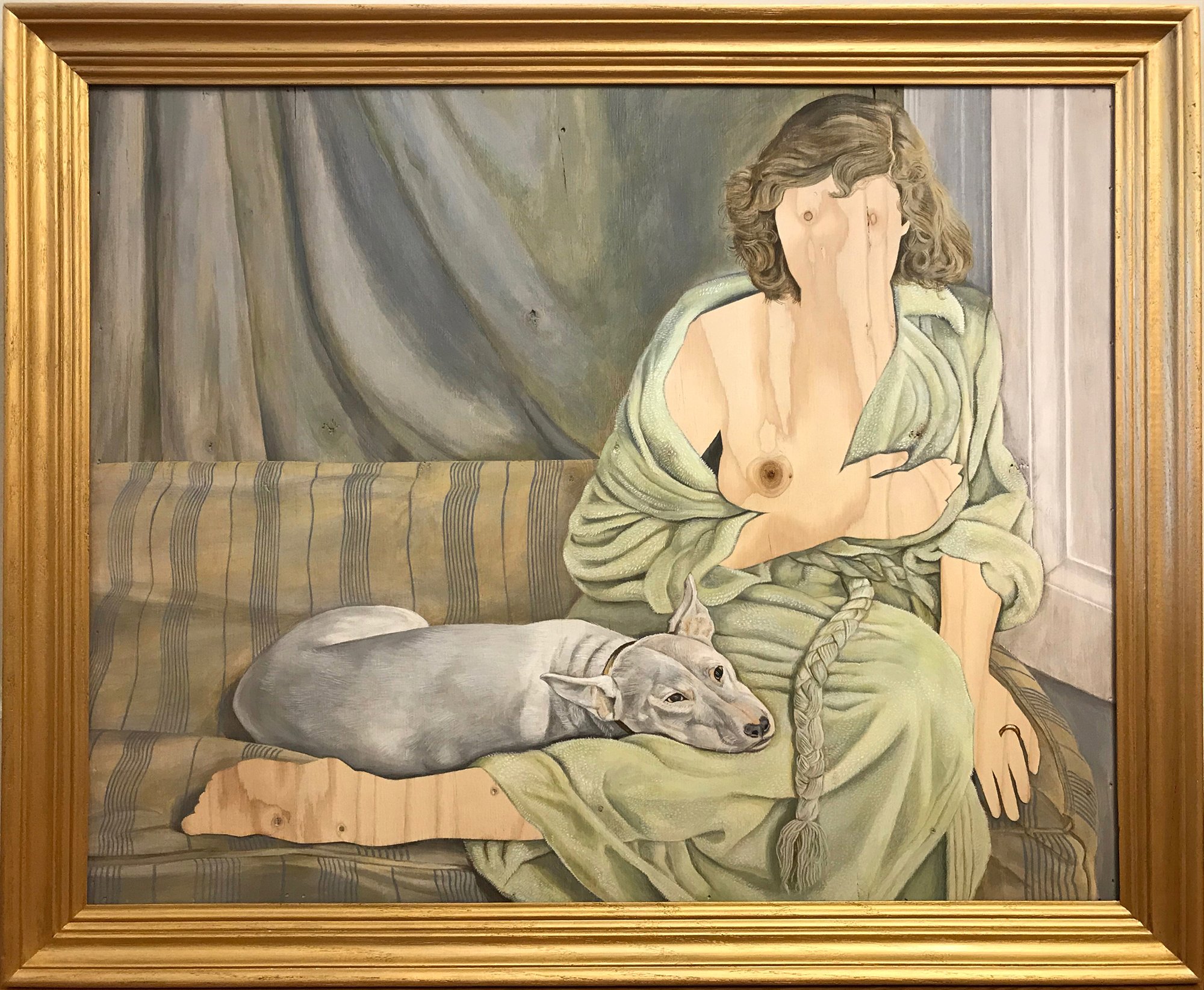

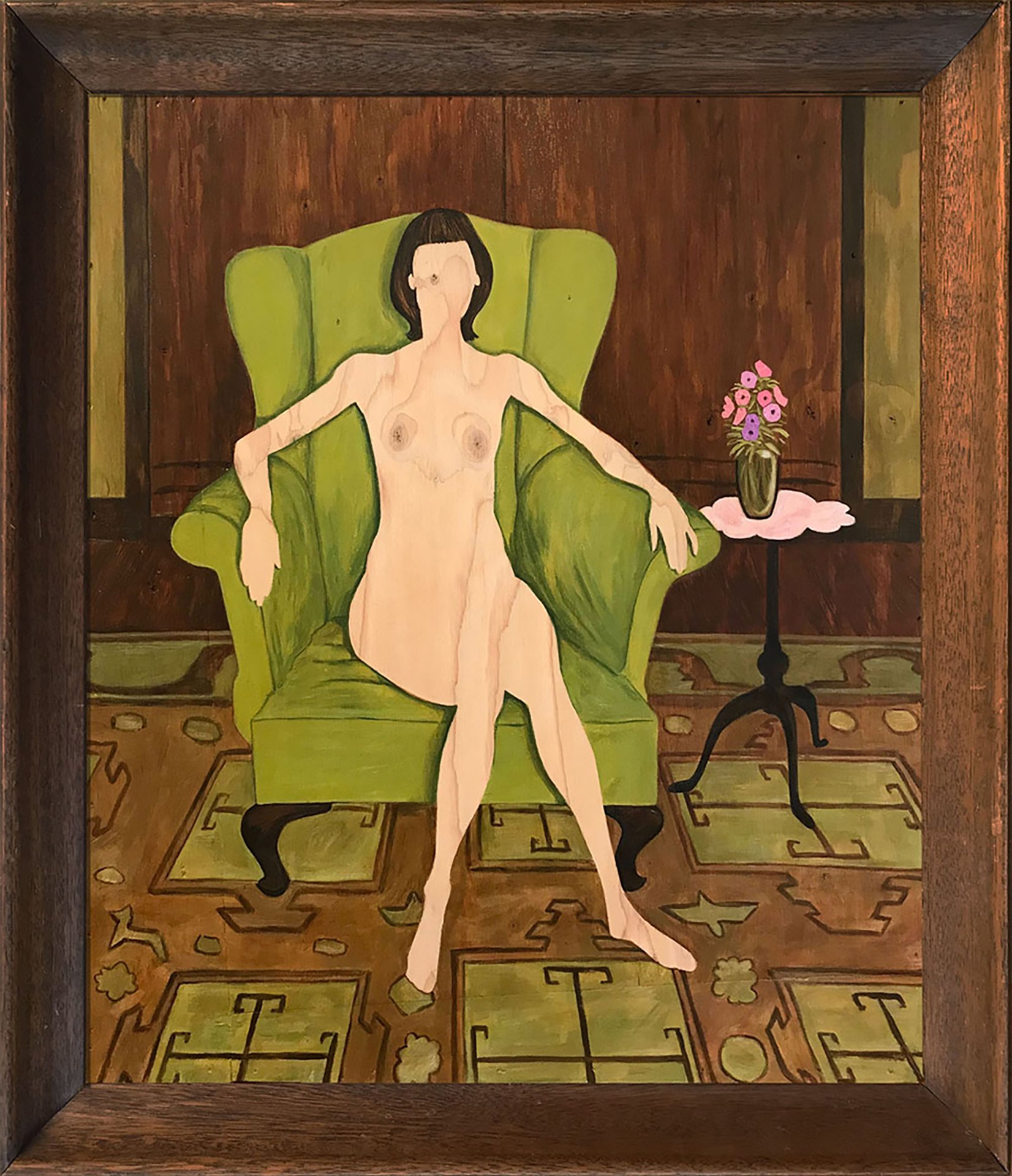
How would you describe your work?
“My work is primarily a social comment. I was looking for a non-confrontational way of describing how it feels for women living in a world that is not set up for their benefit. Before The Missing Women Series, I was working in a more abstracted way exploring the issues of possession. It’s a recurring theme with me, going back to my college days. Piles of ‘assets’ became breasts, women as commodities of free labor, or being forced by poverty to use their bodies as commodities, usually to their disadvantage.
I started to feel uncomfortable about the itemization of the woman’s body parts and wondered how I could give her a personality and a context. I chose the gallery or museum format. Given that everything important that happened is supposed to be preserved in these institutions, it was a good place to show the absence of female representation herein, in terms of accomplishments and genius. But I also wanted to highlight how society is obsessed with representing women almost exclusively in terms of their body. This analogy reaches across social and artistic media too — all other underrepresented sections of society are also vulnerable to misinterpretations from multiple perspectives.”
Which artists influence you most?
“I am influenced by anyone who questions a given social precept. For this reason, I find myself naturally drawn to other feminist artists, and the LGBTQ+ and BIPOC communities. Artists from these common interest groups also have the same problems of having to communicate with the accepted visual and verbal languages, which don’t adequately describe our existence. They also enjoy confronting this issue.
I am drawn to Fabiola Jean-Louis, who takes a traditional European Fine art format and inserts her own narrative. Mickalene Thomas and Lina Iris Viktor also use references to traditional European art history, and explore how that relates to their own individual experiences, cultures, and perspective in history.”
“I love that as I paint, I feel like I’m giving the women depicted in the original painting a voice in the future. It has been said that the women in my paintings are more present in their absence. I guess because they speak their truth and are not purely objects to be looked at. Collectively, their eyes seem to follow you around the room, inviting you into their void existence.”
What is your creative process like?
“First, I look for a famous or semi-famous, hopefully poignant painting, image or sculpture from history. Although there is an abundance of Eurocentric art for me to pick from, it is important for me to be inclusive and represent as many intersectional groups of women as possible. I’m always interested in suggestions which may point me toward historical art that wasn’t included in my art history education.
I have a collection of old frames recycled from thrift stores in my basement, and I find an appropriate one. The frame should be from the same time period and should not distract visually from the painting. That the frames are an age old format to contain and confine an image, are secondhand and are discarded is significant, and adds meaning when I set up the gallery/museum installations. But individually, my work stands up without the frames.
Next, I take measurements of the geographical location of the knots in the wood. I’ll need to make a fairly accurate composition of the original painting, and with this information, I venture to the hardware store. When I’ve found the wood I need, I cobble together and cradle the board onto a paintable surface which fits the chosen frame.
I paint from the image in question and leave out the women depicted in the original. Often, if appropriate and not too distracting, I will add the embellishment of foil wrappers. It’s all part of the packaging.
Both animation and printmaking involve layering processes, with inclusion by omission. Working in this way was a natural progression for me, and I delight in the symbolic nature of their absence. I love the challenge of manipulating the wood grain and the composition of the painting to arrive at an identifiable image.
When I have a solo show, I set it up as a gallery/museum installation, complete with viewing benches, a security guard and a docent tour performance. The docent is only semi aware of the gaps in his knowledge of the female experience, and more often than not, the audience will heckle him in a jovial manner. It makes for a generally fun event, but it doesn’t pull any punches as to the message of the series. I like to have some merchandise for sale representing how women’s bodies are used for profit, not usually their own.”
What is an artist’s role in society and how do you see that evolving?
“It’s the artist’s job to investigate what we’re taught and build on it. It’s a great luxury or hard-fought discipline to be in a position where you’re able to create your own artistic agenda. It puts us in the unique position of being autonomous. If artists don’t question things, who will? I hope artists in the future question every tiny thing we do today. It’s our job to present the less considered, and to highlight the less observed.
I heard that art should remind us of our mortality. Anything that reminds us of our mortality also forces us to consider our lives. The artist’s job is to open a dialogue and push the boundaries, to show how the old, unquestioned, preconceived standards affect everyone in society, and should be questioned. We need to see the lives of the less presented more than the lives of those most represented, because those most presented are by no means the majority, and they constantly have all the visibility.”
Have you had any noteworthy exhibitions you'd like to share?
“You can see my works on the following sites:
issuu, City Lifestyle, Spaceworks Tacoma, Oly Arts and Gillia Gallery.
I also have a solo show coming up at Fogue Studios and Gallery, Airport Way S, in Georgetown district, Seattle, WA. 98108. May 1st - June 30th. The artist reception is on May 13th from 5-8pm, with a docent tour at 7pm followed by an artist talk. The Missing Women Series book, and other Missing Women Series merchandise will be on sale in the gallery "gift shop”.
Another solo show at Gallery 839 in Los Angeles, has been postponed due to the pandemic. Dates to be announced.”






